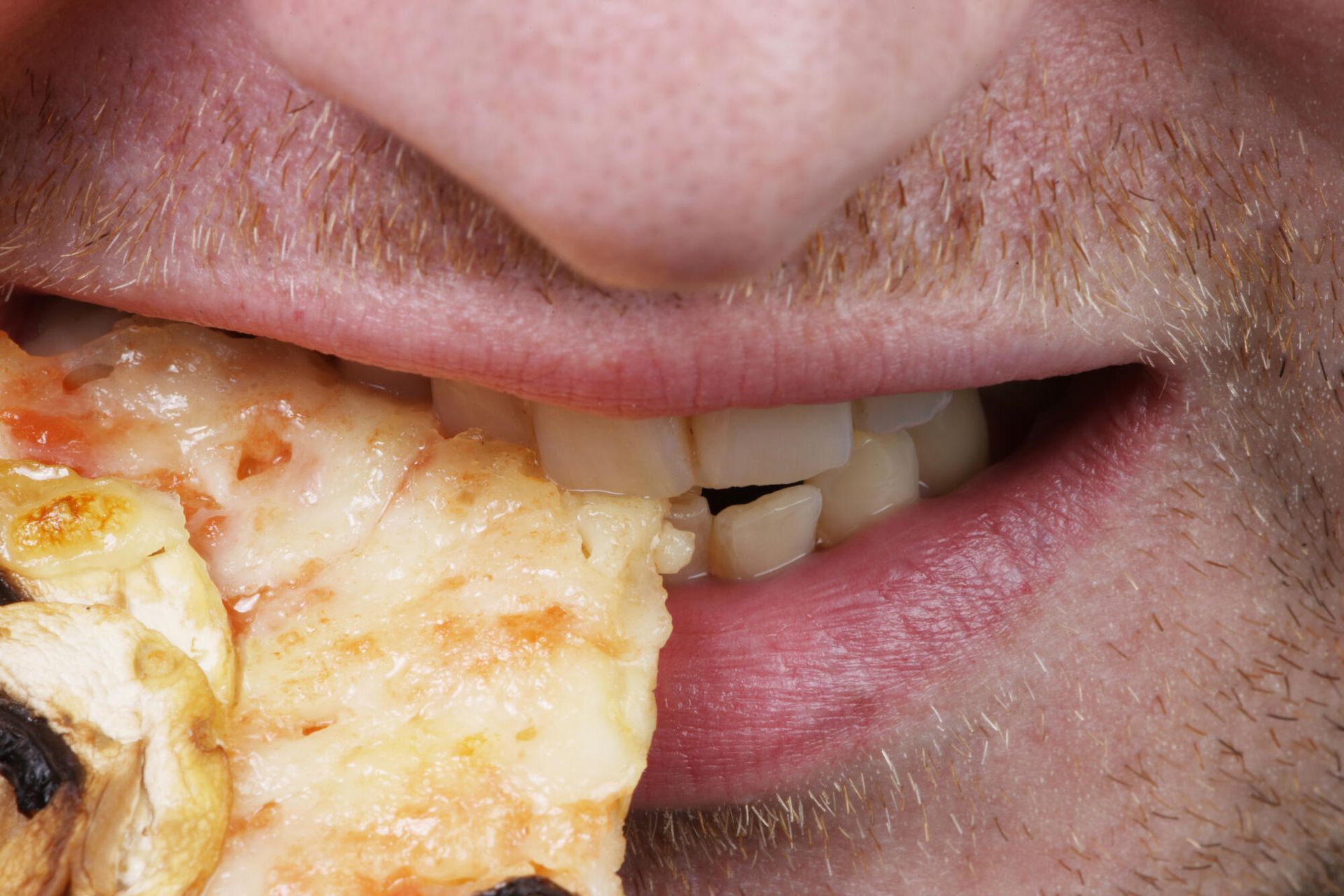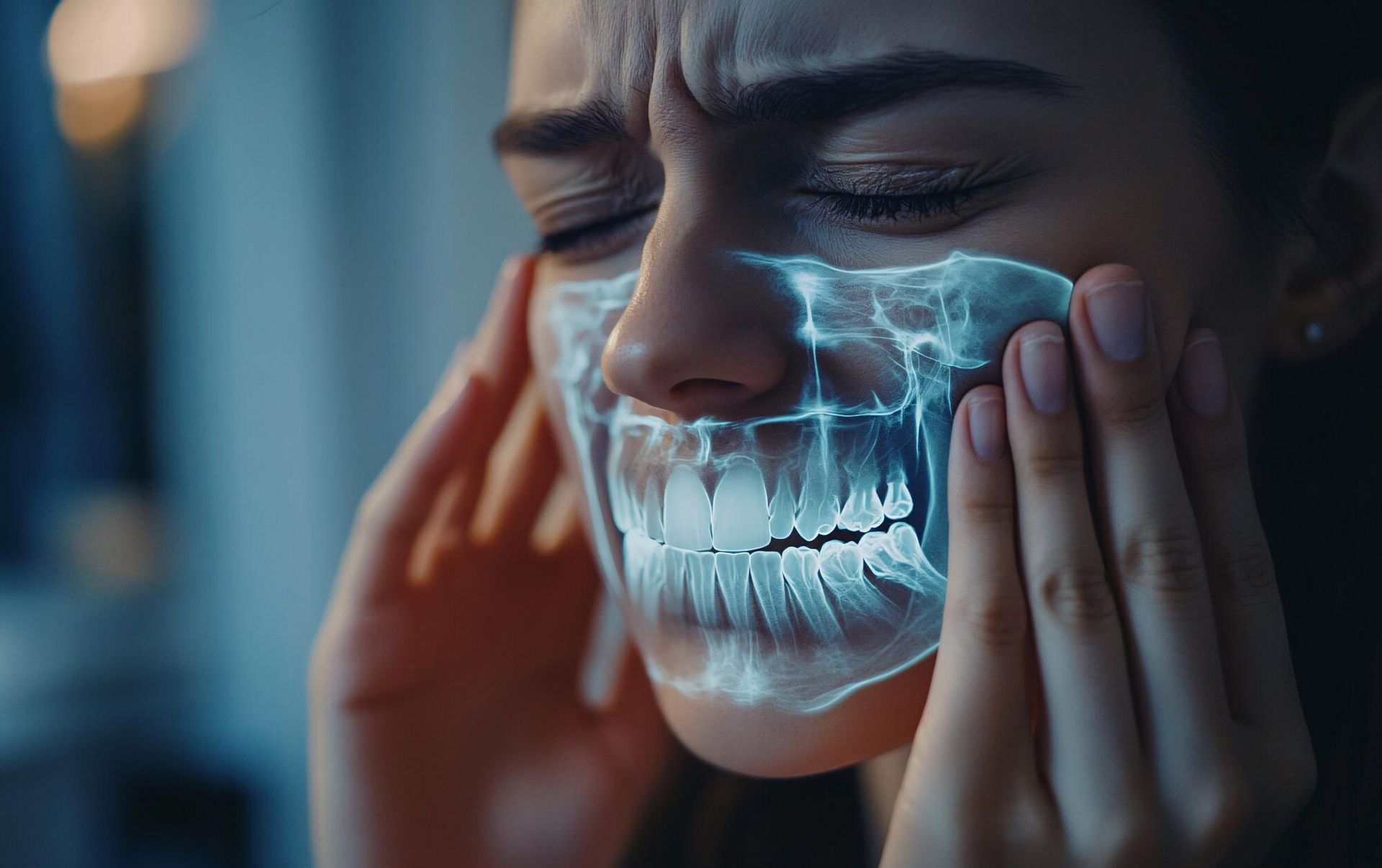Understanding the Anatomy of the Temporomandibular Joint: A Patient's Guide

Let's be honest. You probably don't think too much about your temporomandibular joint... until it hurts to chew. Or until you're getting tooth pain because of it.
But when you're experiencing persistent jaw discomfort, TMJ issues, and tooth pain, you're left frustrated and seeking answers.
Understanding the temporomandibular joint anatomy (TMJ) is key to finding relief. Today, we'll examine the TMJ's structure and function, common disorders, and tips for managing TMJ and tooth pain.
TMJ Anatomy
The temporomandibular joint, or TMJ, is a small but essential part of your jaw. It's where the lower jawbone, called the mandible, connects to the temporal bone of your skull, located just in front of each ear.
This joint allows your jaw to move up and down, side to side, and back and forth, enabling you to talk, chew, and yawn. The TMJ is unique because it combines a hinge action with sliding motions.
The TMJ is a complex structure made up of bones, muscles, ligaments, and cartilage. The main bones involved are the mandible, the lower jawbone, and the temporal bone, which is part of your skull. These bones meet at the TMJ, creating a joint that allows for a wide range of movements.
Between these bones lies the articular disc, a small, soft pad made of cartilage. This disc acts as a cushion, absorbing shocks to the joint and ensuring smooth movement. Without this disc, the bones would grind against each other, causing pain and damage.
Ligaments and Muscles
Ligaments are strong bands of tissue that hold bones in place. In the TMJ, ligaments connect the mandible to the temporal bone, providing stability while allowing movement. These ligaments ensure that the jaw moves in a controlled and coordinated manner.
Muscles also play a vital role in TMJ function. Several muscles, including the masseter and the temporalis, control the movement of the jaw. These muscles work together to enable chewing, talking, and other jaw movements. When these muscles are strained or overworked, they can lead to TMJ disorders and pain.
Cartilage covers the surfaces of the bones in the TMJ, providing a smooth surface for them to move against. Synovial fluid, a lubricating fluid within the joint, helps reduce friction and wear on the cartilage. This fluid is essential for maintaining the health of the joint and allowing smooth, pain-free motion.
Temporomandibular Joint Functions
The temporomandibular joint (TMJ) is essential for various jaw movements. One of its primary functions is to allow you to open and close your mouth.
This is crucial for everyday activities like eating, speaking, and yawning. The joint's hinge action makes these movements smooth and efficient.
The TMJ also enables side-to-side and back-and-forth jaw movements, which are important for chewing food thoroughly.
When you chew, your jaw moves in a grinding motion, breaking down food into smaller pieces. This process makes swallowing easier and aids in digestion.
Common TMJ Disorders
TMJ disorders are a group of conditions that cause pain and dysfunction in the jaw joint and the muscles that control jaw movement. These disorders are quite common and can affect anyone, regardless of age.
The most noticeable symptom of TMJ disorders is pain, which can be felt in the jaw, face, neck, and even shoulders. Chewing, talking, or yawning often aggravates this pain.
Another common symptom is a clicking or popping sound when you open or close your mouth. This noise is usually harmless but can be a sign of a misaligned joint or a displaced disc within the TMJ. Some people with TMJ disorders also experience limited jaw movement, making it difficult to open their mouths wide or move their jaws from side to side.
Various factors can cause TMJ disorders. One common cause is arthritis, which can wear down the cartilage in the joint, leading to pain and reduced mobility.
Injuries to the jaw or head can also damage the TMJ, leading to similar symptoms. Stress is another significant factor, as it often causes people to clench or grind their teeth, putting extra pressure on the TMJ.
Identifying and treating the disorder's underlying cause is important for managing symptoms and improving function.
Treatment for TMJ disorders varies depending on the cause and severity of the symptoms. Mild cases might improve with simple home remedies, such as applying ice or heat to the affected area, practicing jaw exercises, and managing stress.
In more severe cases, medical or dental intervention may be necessary. This can include medications, physical therapy, or, in some cases, surgery.
TMJ and Tooth Pain
TMJ disorders can often lead to tooth pain, even when there's nothing wrong with your teeth. This connection happens because the nerves in your jaw and teeth are closely linked.
When the TMJ is inflamed or misaligned, it can cause pain to radiate to your teeth. This referred paincan make it hard to tell if the problem is with the jaw or the teeth.
One common scenario is experiencing pain while chewing. If you have TMJ issues, the pressure from chewing can irritate the joint and lead to tooth pain.
This pain might feel like a dull ache or sharp, localized discomfort. Sometimes, it can even mimic the symptoms of a toothache, making it difficult to pinpoint the exact cause.
Pay attention to other symptoms to differentiate between tooth pain caused by dental issues and TMJ disorders. If you also have jaw pain, clicking sounds, or difficulty moving your jaw, it's likely related to TMJ. Visiting a dentist or a specialist can help determine the actual cause of your pain.
Patient Guide to TMJ Pain and Anatomy
Understanding the anatomy and function of the TMJ is essential for managing TMJ and tooth pain.
Dr. Bernard Lynch cares about gaining as much education as possible to ensure his patients stay safe and comfortable and end up with the best possible smile to last their whole lives. In 2009 and 2011, he was named one of Northern Virginia's "Top Dentists" and the Consumer Research Council of America nomination as one of "America's Top Dentists."
Get in touch today to find out how
we can help you!












